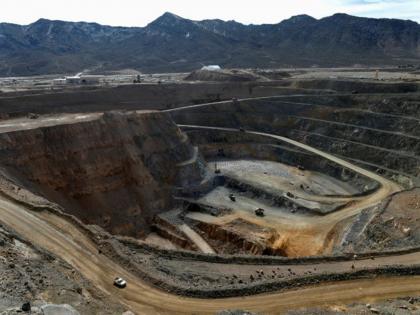Strategic minerals, strategic power: how rare earths are shaping global supply chains: Report
By ANI | Updated: October 22, 2025 11:50 IST2025-10-22T11:47:04+5:302025-10-22T11:50:03+5:30
New Delhi [India], October 22 : As nations accelerate their transition toward clean energy and advanced technologies, a group ...

Strategic minerals, strategic power: how rare earths are shaping global supply chains: Report
New Delhi [India], October 22 : As nations accelerate their transition toward clean energy and advanced technologies, a group of obscure metals, known as rare earth elements (REEs) has quietly emerged as the backbone of modern innovation, driving everything from electric vehicles and wind turbines to satellites and defense systems.
A detailed blog by Kotak Mutual Fund explains, rare earths, comprising 17 metallic elements with unique magnetic and electronic properties, are indispensable to high-tech manufacturing.
Despite their name, they are not truly scarce in the Earth's crust, but the challenge lies in their complex, costly, and environmentally sensitive extraction and refining.
A single wind turbine, for instance, can contain up to 600 kilograms of REE-based magnets, illustrating their central role in renewable energy technologies.
As the global community strives to meet the Paris Agreement's climate goals, rare earths have become critical enablers of the energy transition. Metals such as neodymium and praseodymium are essential for electric vehicle motors and wind turbines, while samarium and dysprosium are used in defense applications and high-performance magnets.
With demand expected to rise more than 50 percent by 2040, these elements are now regarded as strategic commodities, vital for economic security, technological advancement, and national defense. However, global supply remains highly concentrated, making rare earths both a technological asset and a geopolitical vulnerability.
Although deposits of rare earth exist across continents, production and refining are dominated by a handful of countries, chief among them China, which controls 69 per cent of global mining and 90 per cent of refining capacity. India currently has less than 1 percent of global refining and mining but controls about 6.3 per cent of global reserves.
China's dominance stems from decades of state-backed investment and lower production costs, turning REEs into a strategic lever in international trade. As former Chinese leader Deng Xiaoping once remarked, "The Middle East has oil; China has rare earths."
India is now positioning itself as a key player in the REE value chain. Under the National Critical Mineral Mission (2025), the country is promoting domestic exploration, processing, and recycling through initiatives like KABIL (Khanij Bidesh India Limited) and its partnership in the U.S.-led Mineral Security Partnership.
The recent removal of IREL (India) Limited from the U.S. export control list and the commissioning of its new samarium-cobalt magnet plant in Visakhapatnam mark major milestones. These efforts, coupled with Production Linked Incentive (PLI) schemes and R&D investment, aim to reduce import dependency and build resilient supply chains for critical minerals.
The International Energy Agency (IEA) projects that global REE demand could surge by 300-700 per cent by 2040, with China's share expected to decline as new producers enter the market. Still, diversification is costly and time-intensive.
KotakMF blog says, securing rare earths will be central to future industrial policy and energy security. Global cooperation, innovation, and sustainability in extraction will determine whether these small elements continue to power billion-dollar breakthroughs in the decades ahead.
Disclaimer: This post has been auto-published from an agency feed without any modifications to the text and has not been reviewed by an editor
Open in app